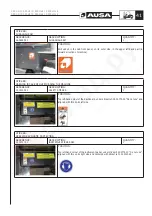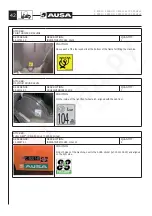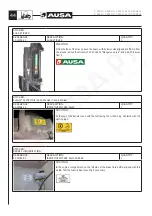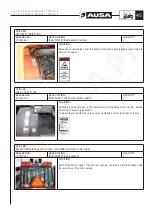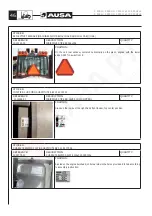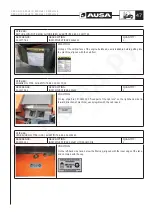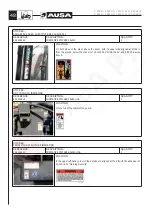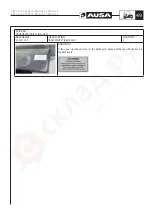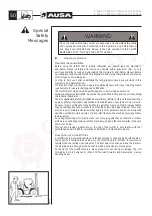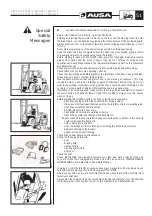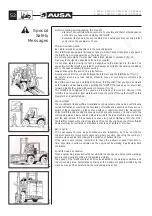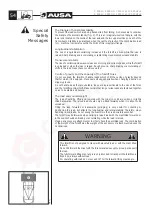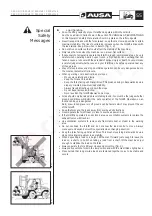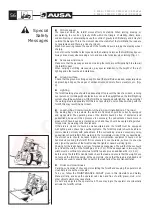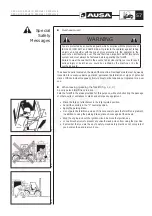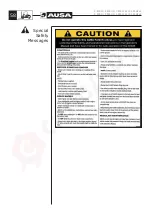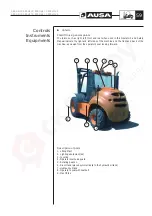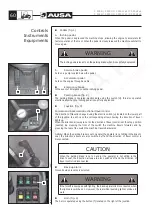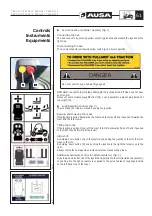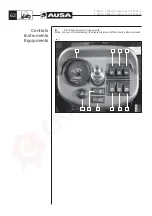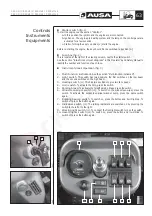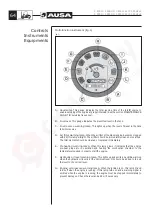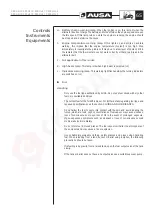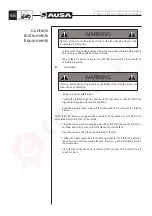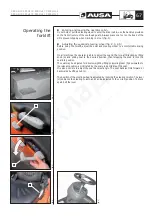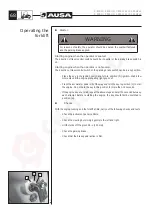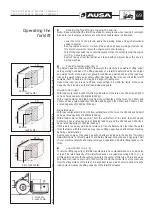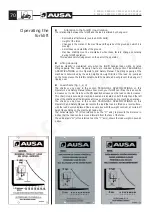
Load
handling
• Know the lifting capacity of your forklift and operate within those limits.
See the Load Limit Charts shown in the section
TECHNICAL SPECIFICATIONS
on this Operator’s Safety Manual and shown in a plate on the left mudguard.
• Never transport loads with the forks raised -keep them as low as possible to attain
maximum stability-. The risk of overturning increases when the forklift is driven with
the load raised. Keep it low when in transit.
(fig. 1, 2)
• Do not drive on surfaces that could affect the stability of the machine.
• Only raise the forks when the machine is on a level, flat surface.
• If necessary to temporarily operate the forklift in rough, unimproved areas, be very
careful when operating near an open trench, a high bank or an overhang that can
fall and cause a roll over with the potential of serious injury or death. You must make
a careful judgement whether you and your forklift can be safely operated near any
of these areas.
• Stay off steep inclines and slopes. Hillside operation can be very dangerous due to
the constant potential of rollovers.
• When operating on modest inclines or slopes:
- Move very carefully and slowly.
- Keep the forks and load low.
- Keep the forks facing uphill at all times. This means driving in backwards down a
slope to maintain maximum load stability.
- Always travels directly up or down the slope.
- Do not travel across an incline.
- Never position the forklift sideways on a slope.
• Forks should only be raised on level stable ground. You must be the judge whether
ground conditions will permit the safe operation of the forklift. Operation on an
incline can be very dangerous.
Rain, snow, loose gravel or soft ground can be factors which may prevent the use
of the forklift.
• Keep the forks and the loads away from overhead obstructions.
• Never operate the forklift near or close to overhead power lines.
• If the forklift is operated in an enclosed area, use ventilation systems to replace the
exhaust fumes with fresh air.
• Use ventilation systems to remove any flammable dust or steam in the working
area.
• Do not overload the forklift and do not allow the load centre to move. Always
manoeuvre slowly and smoothly especially when changing direction.
• Keep the forks facing uphill at all times. This means reversing backwards down a
slope to maintain maximum load stability.
• When depositing a load to a height, tilt the mast forward just enough to leave the
load on a shelf or pile. When taking a load from a shelf, tilt the mast back just
enough to stabilise the load on the forks.
• Always operate the fork tilt lever slowly and smoothly.
(fig. 2)
.
• Always drive with the forks in the low position and with the mast tilted slightly back.
• Make certain that long or wide loads are fastened together so as to be stable and
secure.
C 400 H / C 400 HI / C 400 H x4 / C 400 HI x4
C 500 H / C 500 HI / C 500 H x4 / C 500 HI x4
55
(fig. 1)
(fig. 2)
Special
Safety
Messages
Содержание C 400 H
Страница 2: ......
Страница 4: ......
Страница 60: ...C 400 H C 400 HI C 400 H x4 C 400 HI x4 C 500 H C 500 HI C 500 H x4 C 500 HI x4 58 Special Safety Messages ...
Страница 105: ...Electrical circuit diagram 1 C 400 H C 400 HI C 400 H x4 C 400 HI x4 C 500 H C 500 HI C 500 H x4 C 500 HI x4 103 ...
Страница 106: ...Electrical circuit diagram 2 C 400 H C 400 HI C 400 H x4 C 400 HI x4 C 500 H C 500 HI C 500 H x4 C 500 HI x4 104 ...
Страница 107: ...Electrical circuit diagram 3 C 400 H C 400 HI C 400 H x4 C 400 HI x4 C 500 H C 500 HI C 500 H x4 C 500 HI x4 105 ...
Страница 108: ...Electrical circuit diagram 4 C 400 H C 400 HI C 400 H x4 C 400 HI x4 C 500 H C 500 HI C 500 H x4 C 500 HI x4 106 ...
Страница 116: ......
Страница 117: ......
Страница 118: ......

